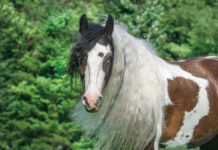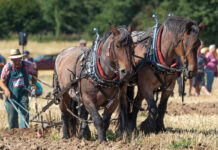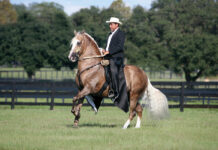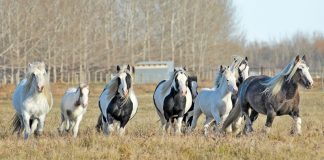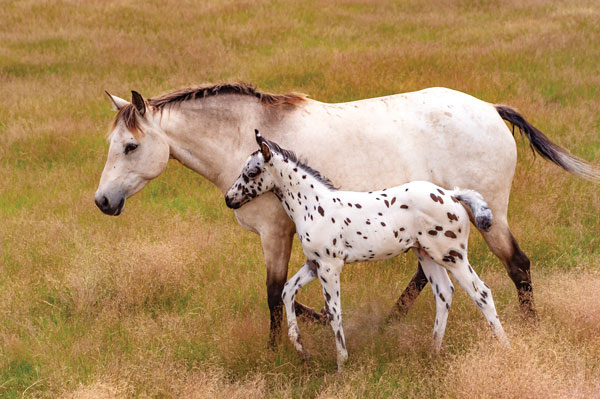
For the most part, horse breeds share common coat colors, like chestnut, bay, gray, and black. Likewise, most horses share the same type of white markings, such as star, blaze, socks and stockings. But one group of coat patterns—splashy spots, varnish roan, snowflakes and more—are made famous by the beautiful and instantly recognizable Appaloosa horse. Let’s take a closer look at this popular breed.
The Appaloosa Horse: An American Original
 Spanish explorers and colonists brought horses to North America on ships about 500 years ago. Within a century or two, the descendants of those horses were widespread across the continent. It didn’t take long for innovative Native American tribes, including the Nez Perce, to put horses to good use.
Spanish explorers and colonists brought horses to North America on ships about 500 years ago. Within a century or two, the descendants of those horses were widespread across the continent. It didn’t take long for innovative Native American tribes, including the Nez Perce, to put horses to good use.The name “Appaloosa” is a fun example of the way words and language change over time. Originally, Appaloosas were known as “Palouse horses,” named after the Palouse River in the northwestern U.S. where the Nez Perce developed the breed in the 1700s. Eventually, Palouse horse became “a Palouse horse,” and then “Appaloosa.”
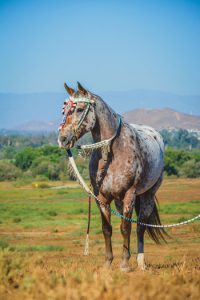
American explorer Meriwether Lewis (of the Lewis and Clark expedition) noted the spotted coat patterns of these horses when he visited the Northwest basin region of Washington as early as 1806:
“Some of these horses are pided with large spots of white irregularly scattered and intermixed with black, brown, bey [sic] or some other dark color.”
He also described the horses as “active,” “durable, “elegant,” and “excellent.” Sounds a lot like the Appaloosa today!
A Western Horse
Other horse breeds have influenced the Appaloosa, including American Quarter Horses, Thoroughbreds and Arabians. In fact, the American Quarter Horse influence in the Appaloosa helps give some of the horses a decidedly “stock horse” appearance, and it is popular among western riders.
Appaloosas excel in western pleasure classes as well as other events like reining, cutting, roping and barrel racing. They’re also fine ranch horses. And of course, the Appaloosa wouldn’t be a true western breed unless it made a great trail horse—which it does! In fact, the Appaloosa Horse Club (ApHC) even offers sanctioned trail rides.
Thanks to their natural athleticism and talent, Appaloosas can also shine in English disciplines, including hunter/jumpers, dressage and eventing. And you’ll even find some Appaloosas at work as driving horses, pulling carts for show or pleasure.
One Colorful Breed
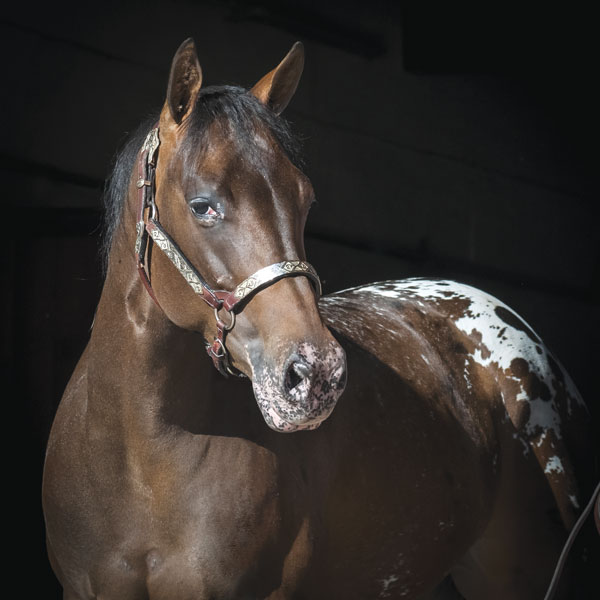
The first pattern that might come to mind when thinking about Appaloosa horse colors is the spotted blanket, but there are other coat patterns, too. In fact, the ApHC recognizes several different coat patterns, along with 13 base coat colors. But some horses seem to defy the boundaries and display multiple patterns, which adds to the fun!
Some of the Appaloosa coat patterns you might find include:
◆ Blanket: This popular pattern involves a solid coat with a spotted blanket of white on the hindquarters.
◆ Snowcap: This pattern is much like the spotted blanket, but without the spots. It looks like the horse received a dab of frosting on his back!
◆ Frost/Varnish: These are two separate patterns that look similar; they feature white hairs scattered throughout the horse’s coat, presenting an appearance similar to roan.
◆ Marble: Imagine a spotted blanket that kept going and covered the horse’s whole body, along with a dash of roan, and you’ll have the marble pattern.
◆ Leopard: A striking color pattern that features a white base coat covered in dark spots—think the horsey version of a Dalmatian.
◆ Snowflake: This is basically the reverse version of a leopard pattern. This time it’s the base color that is dark and the spots that are light. There also may be fewer spots.
◆ Solid: It’s also possible for an Appy to simply be a solid color without spots. But many of these horses retain the Appaloosa characteristics of striped hooves, mottled skin around the face, or white sclera around the eye—all of which go along with the breed’s unique coat patterns.
Spotted and Smaller
Do you love the Appaloosa’s eye-catching coat patterns but want something a little smaller? You’re in luck, because the Pony of the Americas (POA) brings the flashy Appaloosa coloring in a smaller package. POAs were developed through a combination of Appaloosa, Shetland Pony, Welsh Pony, Arabian and other breeds.
Purebred Registry for the Appaloosa Horse
Because the ApHC allows outcrosses to Quarter Horses, Thoroughbreds, and Arabians for registration, the International Colored Appaloosa Association (ICAA) was formed to preserve the breed and its heritage, to promote these versatile and athletic horses throughout the world, and to develop the purebred Appaloosa.
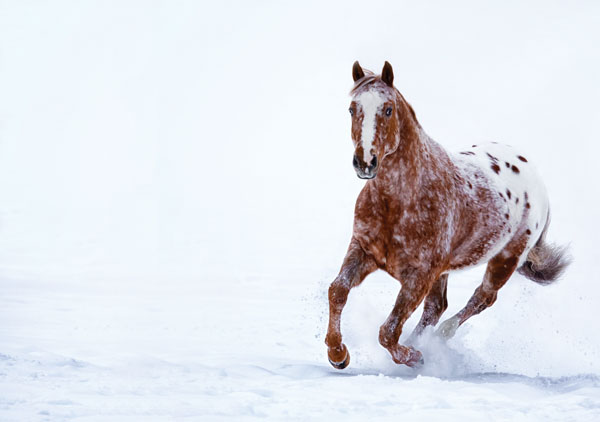
Using the accepted method of breeding strictly registered Appaloosa to registered Appaloosa with no outcrossing for eight generations, the ICAA’s goal is to one day achieve purebred Appaloosa horses.
Did You Know?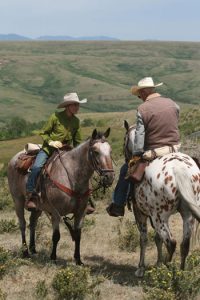 ◆ The Appaloosa is the official State Horse of Idaho. ◆ Appaloosas generally stand 14 to 16 hands high. ◆ The Appaloosa Horse Club was established in 1938, and over 700,000 Appaloosas have been registered. ◆ John Wayne rode an Appaloosa named Zip Cochise in the 1966 film El Dorado. |
This article about the Appaloosa horse appeared in the Winter 2021 issue of Young Rider magazine. Click here to subscribe!

